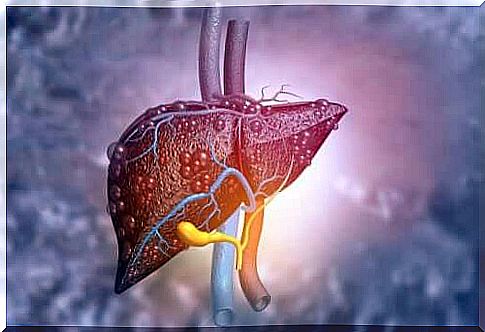Learn All About Liver Disease

All liver diseases require medical attention because they affect a vital organ. The liver plays a role in the digestion of food, stores energy and releases toxins. That is why various liver diseases can even lead to death.
Liver disease is caused by several factors. Sometimes they are caused by viruses. Other times they are due to the ingestion of a toxic substance.
Only rarely are they due to hereditary reasons. In general, the symptoms of liver disease vary widely depending on the condition the patient is suffering from.
However, in some cases they cause no symptoms and are only detectable by lab tests. In this article you will discover the most important liver disorders.
Non-alcoholic fatty liver disease (NAFLD) and non-alcoholic steatohepatitis (NASH)

The liver is a very important organ. The diseases that affect the liver can be very serious. Non-alcoholic fatty liver disease (NAFLD) is characterized by an accumulation of lipids in the liver.
If there is also inflammation and injury of liver cells, it is called ‘non-alcoholic steatohepatitis’ or NASH. Obese people with type 2 diabetes and people with metabolic syndrome are more likely to develop these diseases. Most often, these diseases do not manifest with symptoms.
Cirrhosis, one of the most serious liver diseases
Cirrhosis is one of the most serious liver diseases. This disease causes scar tissue to replace healthy tissue. Thus, the liver is scarred and permanently damaged, meaning it cannot function properly.
There is no specific treatment for cirrhosis. However, there are treatment options for the causes that cause it. The most common causes include:
- Alcoholism.
- Non-alcoholic fatty liver disease (NAFLD).
- Chronic hepatitis C.
- Chronic hepatitis B.
Autoimmune hepatitis
Autoimmune hepatitis (Spanish link) is a chronic disease that occurs because the immune system attacks the liver. As a result, it causes inflammation and damage. If someone with this disease is not treated properly, it can worsen and cause cirrhosis of the liver.
Autoimmune hepatitis is one of the liver disorders that sometimes causes no symptoms at first, although it does over time. Medical professionals diagnose the condition based on the patient’s medical history (Spanish link). They must also request certain tests.
Hepatitis A, B and C

Viruses cause these conditions. Hepatitis A causes inflammation. This, in turn, causes the liver to malfunction. It spreads through contact with the fecal material of a previously infected person.
In turn, hepatitis B has similar characteristics. However, in this case , it spreads through contact with bodily fluids of an infected person. There is an acute and a chronic form. Without treatment, the latter can turn into liver cancer or cause liver failure.
Hepatitis C has a pattern similar to the previous two. However, it spreads through contact with the blood of an infected person. Early symptoms can appear up to 10 years after infection. Like type B, it has an acute and chronic form.
Hepatitis D and E
The hepatitis D virus is very rare and only affects people with hepatitis B. When both hepatitis B and D viruses affect a person, doctors call it a ‘co-infection’. If the person has chronic hepatitis B and then becomes infected with hepatitis D, doctors call it a “superinfection.”
Hepatitis E spreads through drinking water contaminated with the feces of an infected person. It can also be caused by eating undercooked pork or game.
Usually it goes away after a few weeks without receiving any treatment. Due to unknown causes, this disease has a 20% mortality rate in pregnant women.
Other liver diseases
Iron overload is not a specific liver disease, but it does have a significant impact. This condition is characterized by an excessive accumulation of iron in the body. Thus, it can cause liver fibrosis and 60% of patients develop cirrhosis. In total, 5% of cases lead to the development of malignant tumors.
In addition, Wilson’s disease is a rare hereditary condition that does not allow the body to naturally remove the copper it does not need. If copper builds up in the liver, it can lead to cirrhosis.
Risk factors for developing liver cancer include:
- Hepatitis B and C
- cirrhosis
- iron accumulation
- Excessive alcohol intake
- obesity
- Diabetes
Currently, there are several treatments available to combat it. In short, you should not underestimate your symptoms and you should consult your doctor as soon as these symptoms manifest themselves to avoid further complications.









